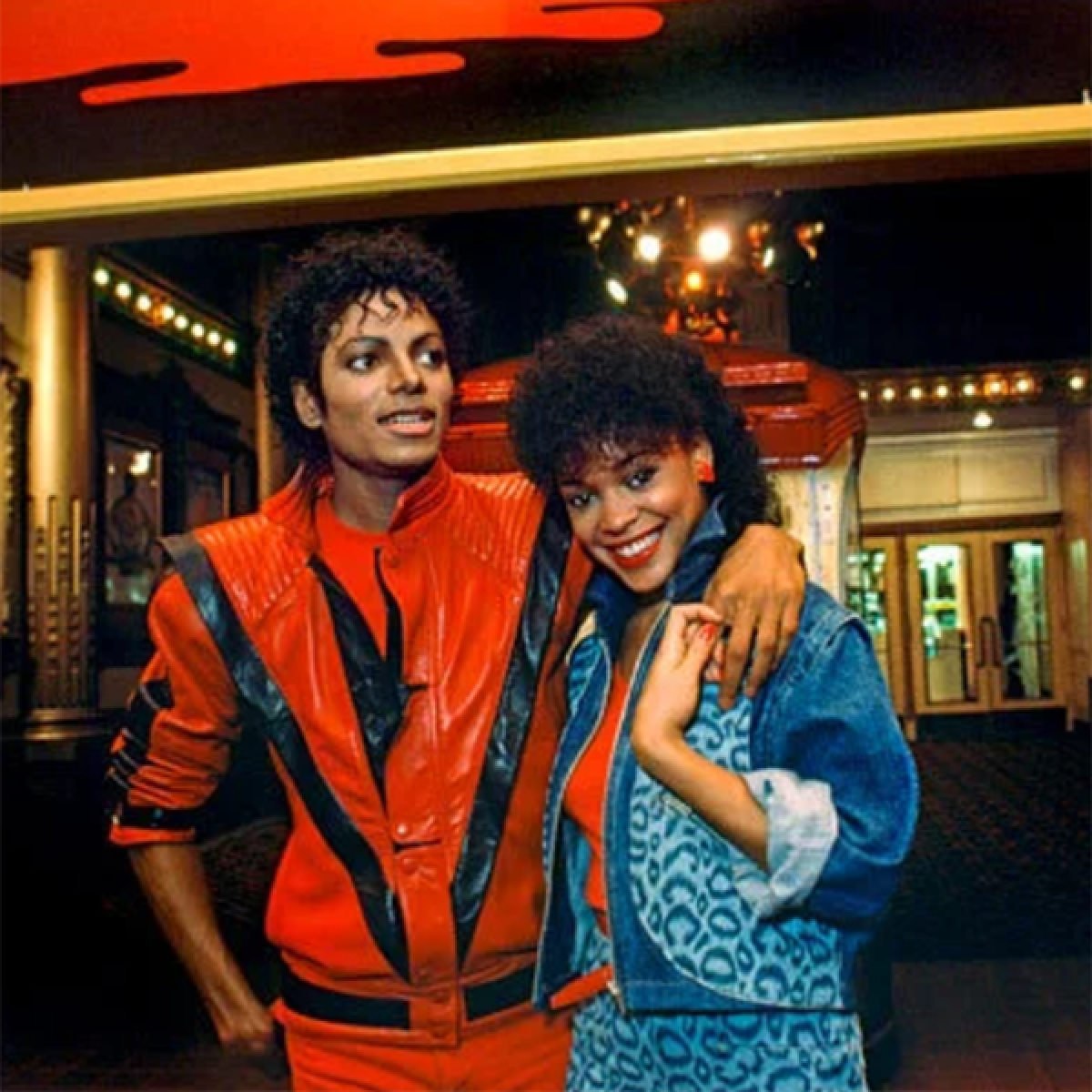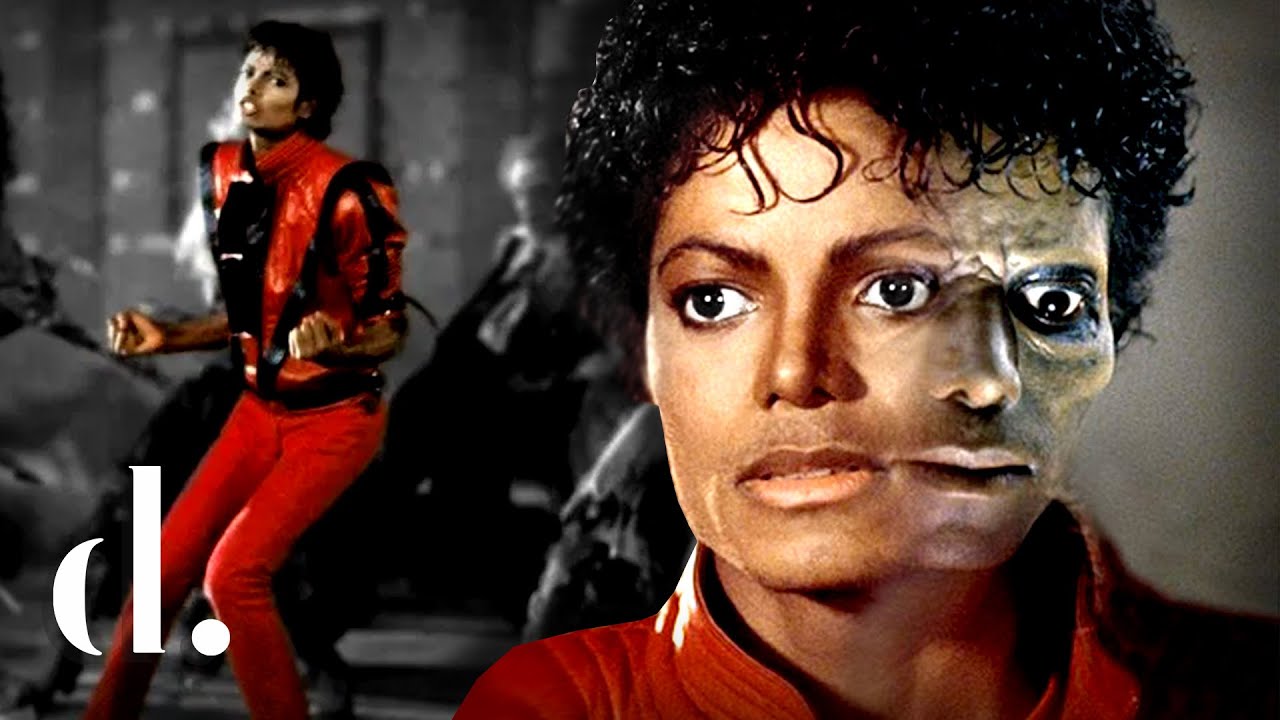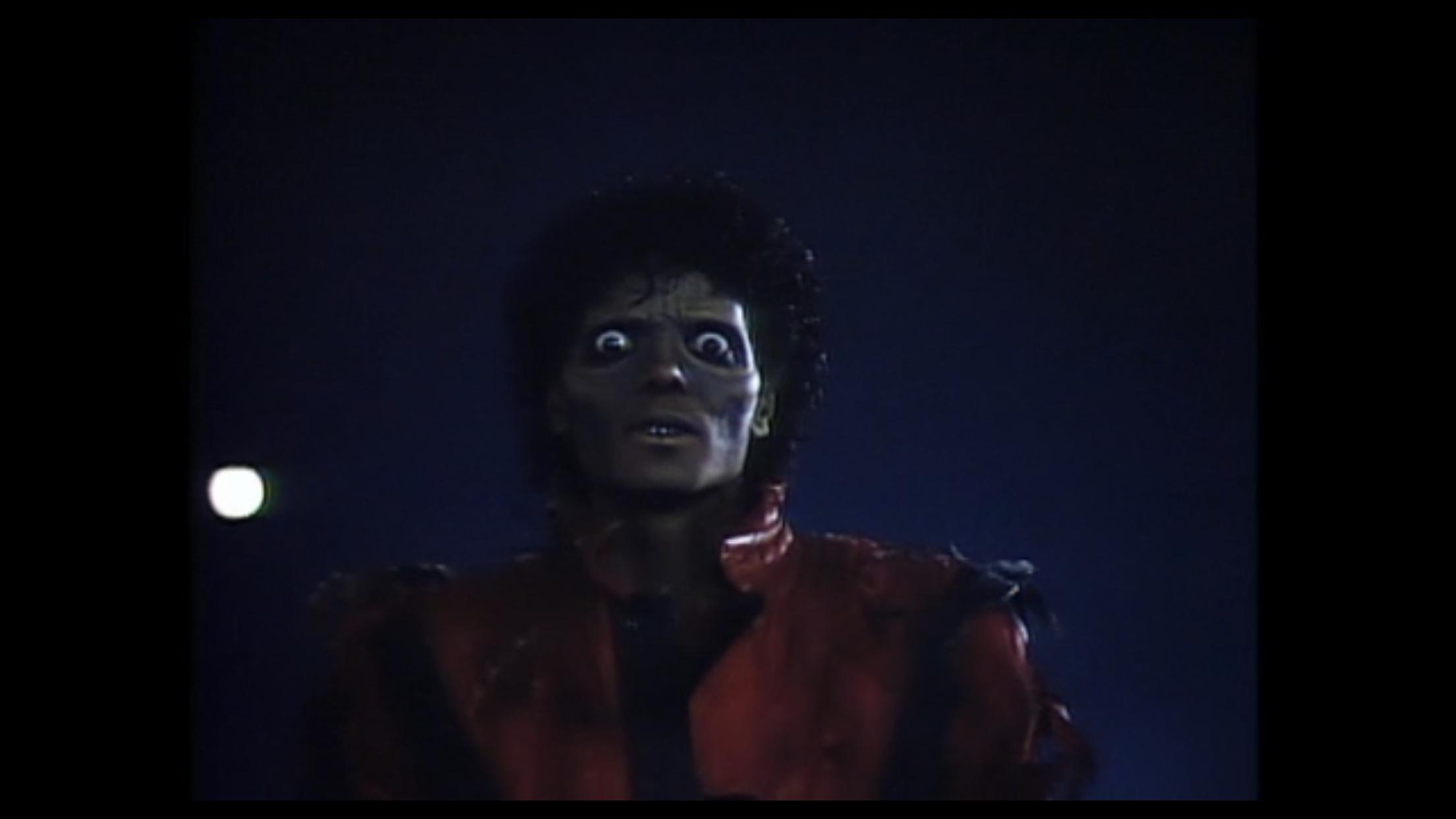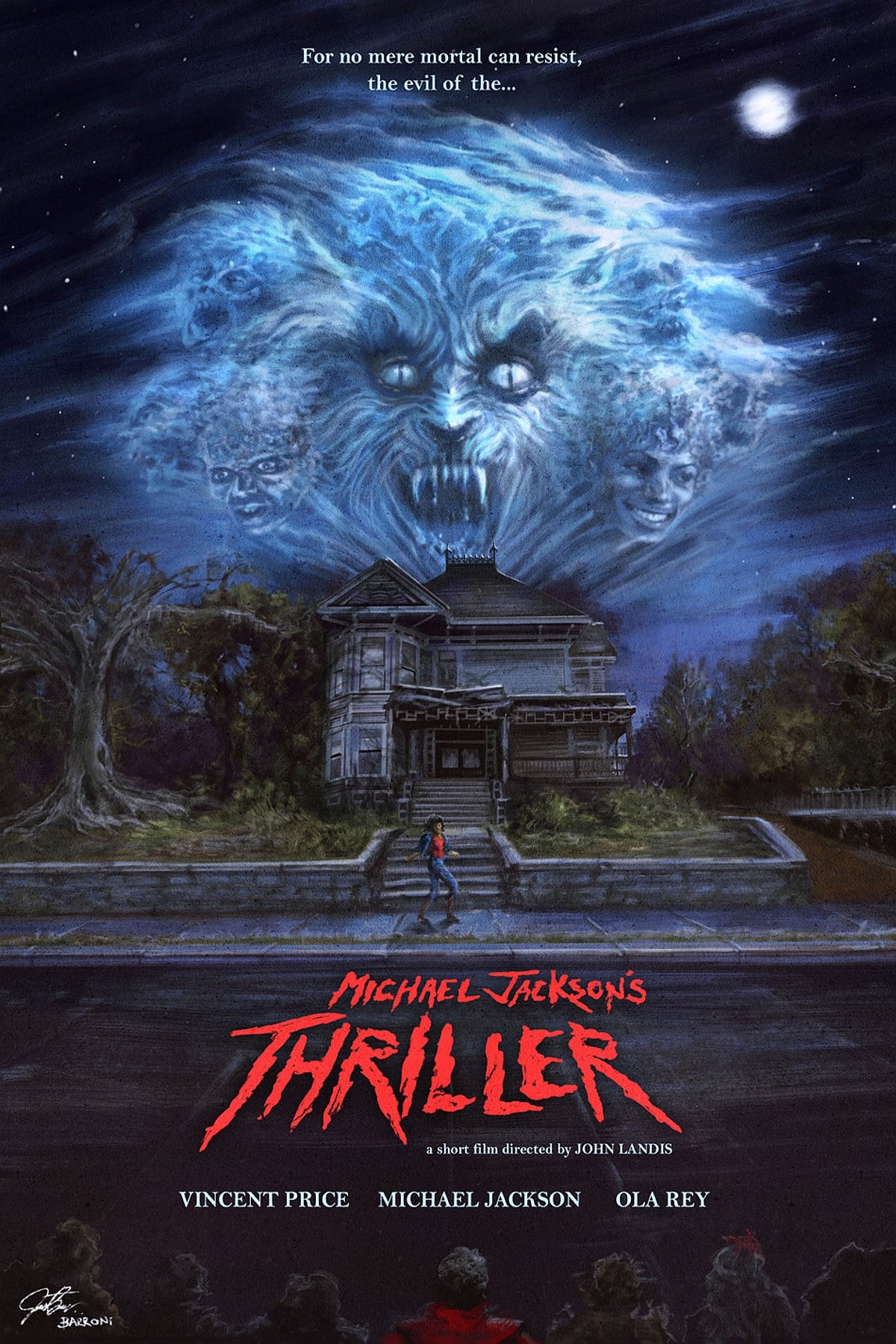🎬 Michael Jackson’s Thriller (1983): A Groundbreaking Fusion of Music and Cinematic Horror

When Michael Jackson’s Thriller debuted in 1983, it not only revolutionized the music video industry but also cemented Jackson’s status as the King of Pop. Directed by John Landis and featuring Jackson’s chart-topping song “Thriller,” the video is a genre-defining piece that blends horror, music, and dance in a way that had never been seen before. Thriller transformed the music video format into a cinematic experience, blurring the lines between music, film, and art. But what is it about Thriller that continues to captivate audiences decades after its release?
Plot Overview:
Set in a classic 1950s horror movie style, the video opens with Michael Jackson and his date (Ola Ray) running out of gas in the middle of nowhere. After walking down a foggy road, Jackson transforms into a werewolf, chasing her through the woods in an homage to classic monster films. This sequence is revealed to be part of a movie that Jackson and his date are watching in a theater.
The real narrative begins when the couple leaves the theater and walks down a dark street, where Jackson warns his date, “It’s only a movie.” As they stroll, the iconic bassline of “Thriller” begins, and the two are soon surrounded by a group of zombies. In one of the most memorable moments in music video history, Jackson and the zombies break into an intricate dance routine, combining elements of horror and pop music choreography.
The video ends with a twist: after the zombies seemingly close in on Jackson’s terrified date, Jackson himself turns to her with glowing eyes, suggesting he, too, is a monster. The video leaves viewers questioning what is real and what is part of the “movie within a movie.”

Character Development and Themes:
At its core, Thriller plays with the concept of duality—Michael Jackson appears as both the innocent romantic lead and the terrifying werewolf and zombie. This duality reflects the theme of transformation that runs throughout the video. Jackson’s metamorphosis from a regular guy to a monster mirrors the overarching tension between good and evil, reality and fantasy.
Ola Ray’s character, the unsuspecting date, serves as the audience’s proxy. Her fear and confusion echo the viewer’s experience of being thrust into this surreal world where nothing is as it seems. The interplay between Jackson and Ray—especially during the zombie dance sequence—creates a balance between horror and playfulness, reminding viewers that they are watching something larger than just a music video.
The theme of transformation extends beyond the characters to the music video format itself. Thriller elevated music videos from promotional tools into an art form, blending cinema with music in a way that had never been attempted before. Jackson’s ability to weave horror elements into a pop song created a new genre of musical storytelling.

Choreography and Visual Style:
One of the most enduring elements of Thriller is its iconic choreography, created by Michael Peters and performed flawlessly by Jackson and his troupe of zombie dancers. The dance routine, especially the synchronized moves of the undead, has become one of the most recognizable sequences in pop culture history. The choreography’s fusion of sharp, angular movements with classic horror tropes (the stiff, jerky motions of zombies) captures the energy of the song while paying homage to horror’s cinematic traditions.
John Landis, known for directing An American Werewolf in London, brings his expertise in horror to the project, crafting a visual style that feels like a classic monster movie. The use of practical effects, especially in Jackson’s werewolf transformation and the makeup for the zombies, adds to the eerie, nostalgic atmosphere of the video.
The lighting, fog, and set design all work together to create an unsettling yet exciting world, immersing viewers in a gothic fantasy that feels both retro and timeless. From the darkened movie theater to the fog-laden streets, Thriller draws heavily on the visual language of horror cinema, using it to enhance the storytelling and amplify the song’s suspenseful beat.

Music and Sound:
Of course, at the heart of Thriller is Michael Jackson’s hit song. Produced by Quincy Jones, “Thriller” features a driving bassline, eerie synthesizers, and Jackson’s signature vocal style, all of which come together to create a perfect blend of pop and horror. The song’s lyrics, which describe a haunting night filled with terror, are perfectly complemented by the visuals of the music video.
Vincent Price’s haunting voiceover toward the end of the song adds another layer of spooky atmosphere. Price’s sinister laugh, combined with the chilling instrumental break, bridges the gap between the musical and cinematic elements of the video, making it feel like a horror film condensed into a few minutes of pop perfection.
The sound design of the video itself is noteworthy, particularly during the werewolf transformation scene and the zombie attack. The growls, eerie sound effects, and atmospheric music all contribute to creating a suspenseful and immersive viewing experience.
Cultural Impact:
Thriller was more than just a music video; it was a cultural phenomenon. The 14-minute mini-movie aired on MTV at a time when the music video industry was still in its infancy. Jackson’s decision to produce a music video that was essentially a short film set a new standard for the industry, and Thriller remains one of the most influential music videos ever made.
Its success also solidified Michael Jackson’s reputation as a visionary artist who was willing to push the boundaries of what music videos could achieve. Thriller was groundbreaking in its fusion of different genres—pop music, horror, and film—and it remains a reference point for artists across all mediums. From the zombie dance becoming a staple in Halloween celebrations to Jackson’s red leather jacket becoming an iconic piece of fashion, Thriller permeated pop culture in every way.

Criticism:
While Thriller is widely regarded as one of the greatest music videos of all time, some critics may argue that the video’s extended length and elaborate production take away from the song’s simplicity. The decision to frame the narrative within a “movie within a movie” structure might feel disjointed to some viewers, who prefer a more straightforward approach to storytelling in music videos.
Additionally, while the horror elements are used effectively, some may feel that the video’s campy tone detracts from the more serious themes of fear and transformation present in the lyrics of the song.
Final Thoughts:
Michael Jackson’s Thriller remains a timeless masterpiece that changed the landscape of music videos forever. With its innovative choreography, groundbreaking special effects, and fusion of music and horror, Thriller is more than just a visual accompaniment to a song—it is a cultural landmark. Jackson’s bold artistic vision, combined with John Landis’s horror expertise, created an unforgettable cinematic experience that continues to influence and inspire artists to this day.
For fans of music, horror, and dance, Thriller is a must-watch—a perfect example of how art can transcend its medium and leave an indelible mark on popular culture.
Movie Information:
- Title: Michael Jackson’s Thriller
- Director: John Landis
- Starring: Michael Jackson, Ola Ray, Vincent Price (narration)
- Genre: Music Video, Horror
- Release Date: December 2, 1983
- Running Time: 14 minutes
- Plot Summary: In this groundbreaking music video, Michael Jackson and his date find themselves in a nightmarish world where he transforms into a werewolf and leads a group of zombies in a dance routine. The video pays homage to classic horror films while blending pop music, dance, and cinematic storytelling.
SUGGESTED VIDEO FOR YOU:
[Movie Review] The Great War of the Norse Gods || Thor 2011
[Movie Review] Terrifier 3 (2024): The Return of Art the Clown in a Blood-Soaked Horror Sequel











